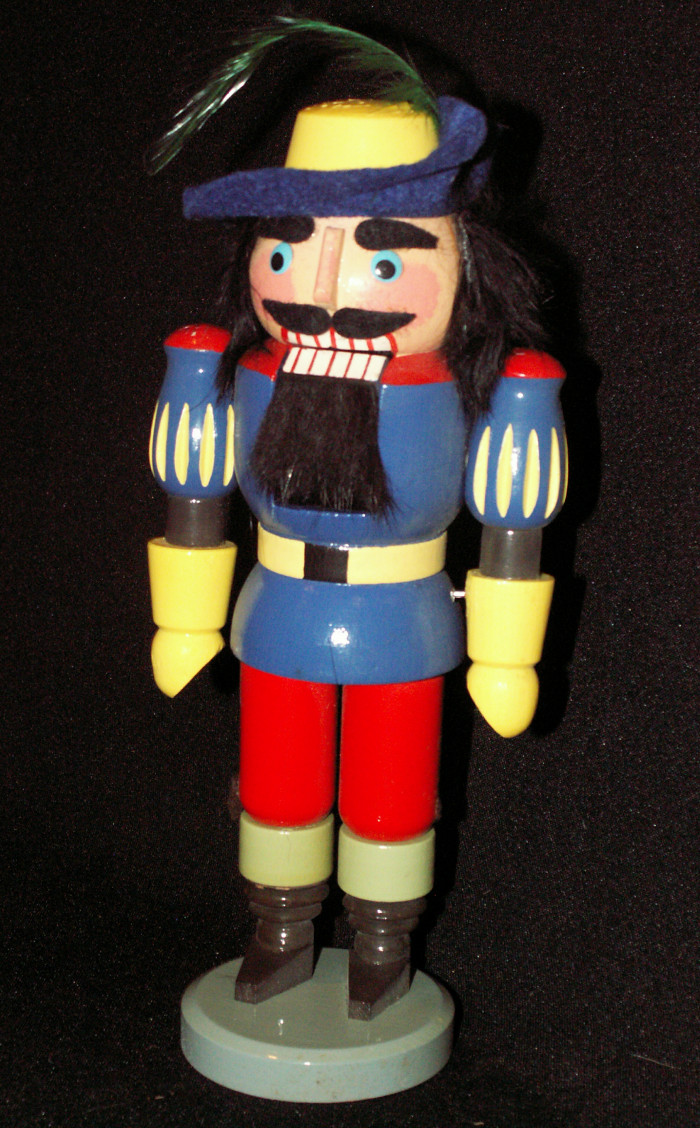German House Charm: "Nussknacker"
Collection: Everyday Connections
According to German folklore, nutcrackers were given as keepsakes to bring good luck to your family and protect your home. The legend says that they represents power and strength and serves like a trusty watch dog guarding your family from evil spirits and danger. A fierce protector, they bare their teeth to the evil spirits and serves as the traditional messenger of good luck and goodwill. Finding tools for opening or removing the shells of nuts challenged our earliest ancestors. Ancient excavations exposed nutshell fragments and it is thought those nuts were broken by stones. Later tools were made specifically for the task of cracking the hard shells of nuts. The earliest nutcrackers were simple and functional, but eventually, beautifully crafted brass and even carved characters emerged as an art form in the 15th and 16th centuries. Many carved characters took on the image of birds, animals, Village Nutcracker Dolls and human forms. When a nut was placed in the "mouth" of dolls, levers or screws on the back could be worked to push the lower jaw up against the upper jaw to crush the nut. The nutcracker story began with the creation of European nutcrackers in Switzerland, France, Germany, and England during the 16th and 17th centuries. The combination of a useful tool and a figural form with a human appearance was well accepted by the mid-18th century. In the toy making center of Sonneberg in the Thuringian Forest there was a reference mentioned in 1735 of "nut-biters" that operated according to the principles of leverage. These nut-biters were described as sturdy, energetic forms with large heads and two moving arms. The body holds a long handled lower jaw that allows the jaw to push the nut against the upper jaw to crack it. In a carnival parade in 1783, students from Freisingen, Germany presented large models of Berchtesgaden wares, including a nut-biter in the form of a little man whose mouth and stomach were one and the same. Select the following link to view our Christmas Nutcracker Decorations. It is in the 18th century Sonneberg and Erzgebirge regions of Germany that the term "nussknacker" appeared in the first dictionary of "High German" by the Brothers Grimm (the dictionary was begun in the 1830s), and is described as "often in form of a misshaped little man, in whose mouth the nut, by means of a lever or screw, is cracked open." Many different authority characterizations--monks, police, not-so-popular political leaders, even Napoleon--were created to amuse people. Nutcrackers were especially popular with Germans who coined the phrase,
Source:
